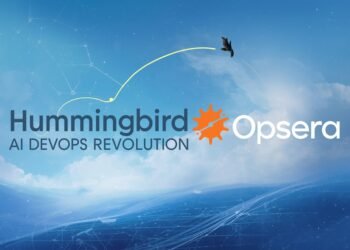As enterprises increasingly adopt multi-cloud strategies, optimizing data flow between cloud environments has become critical. Multi-cloud architectures offer flexibility, resilience, and cost efficiency but also introduce challenges in performance, security, and data management. With the explosion of data, enterprises must implement innovative strategies to enhance performance and protect their data in transit. This article explores the latest advancements in optimizing multi-cloud data flow, ensuring both speed and security.
Challenges in Multi-Cloud Data Flow
1. Latency and Performance Bottlenecks
Data transfers across multiple cloud environments can introduce latency due to geographical distances and network congestion. Traditional approaches relying on centralized data centers or single-cloud ecosystems struggle to maintain optimal speeds.
2. Security Risks in Data Transit
Transmitting data between different cloud providers increases exposure to cyber threats, including data breaches, man-in-the-middle attacks, and compliance violations. Encryption and secure data routing become paramount in such scenarios.
3. Interoperability and Vendor Lock-in
Different cloud providers offer proprietary technologies that may not seamlessly integrate with one another. This lack of interoperability leads to data silos and inefficient workflows, making data movement cumbersome.
4. Cost Management
Cross-cloud data transfers can be expensive due to egress fees and inefficient routing mechanisms. Without proper optimization, businesses may face high operational costs when managing multi-cloud data flow.
Innovations Enhancing Multi-Cloud Data Flow
1. Intelligent Data Routing and Load Balancing
Recent advancements in AI-driven networking allow enterprises to optimize data flow dynamically. Intelligent data routing analyzes real-time traffic conditions, selecting the most efficient pathways between cloud environments. Load balancing ensures that no single cloud node is overwhelmed, distributing data efficiently and reducing latency.
2. Edge Computing and Distributed Data Processing
Edge computing minimizes data travel distances by processing data closer to the source before transferring it across cloud environments. By leveraging edge nodes, businesses can reduce bandwidth consumption and enhance performance while maintaining low latency in multi-cloud architectures.
3. Next-Generation Encryption and Secure Tunneling
To combat security threats, encryption technologies such as homomorphic encryption and quantum-resistant cryptography are gaining traction. Additionally, secure tunneling techniques like zero-trust network access (ZTNA) and software-defined perimeters (SDP) provide an added layer of security, ensuring that only authorized users can access and transfer data.
4. Automated Data Compression and Deduplication
Data compression algorithms and deduplication strategies help reduce the amount of data transferred between clouds. By eliminating redundant data and optimizing storage, enterprises can lower egress costs while improving speed and efficiency.
5. API-Driven Interoperability and Multi-Cloud Abstraction Layers
Cloud-agnostic API layers facilitate seamless communication between different cloud providers. Through multi-cloud abstraction layers, businesses can automate workflows and standardize data transfers, reducing vendor lock-in challenges while increasing operational agility.
6. AI-Powered Anomaly Detection for Security Optimization
Machine learning algorithms analyze traffic patterns to detect anomalies and potential security threats in real-time. AI-powered security monitoring helps prevent unauthorized access and ensures compliance with industry regulations, making multi-cloud environments more secure.
7. Blockchain for Secure Multi-Cloud Data Integrity
Blockchain technology is emerging as a solution to maintain data integrity across cloud platforms. By providing a tamper-proof ledger of data transfers, blockchain ensures transparency and trust in multi-cloud ecosystems.
Best Practices for Optimizing Multi-Cloud Data Flow
1. Implement a Hybrid Data Management Strategy
Enterprises should develop a hybrid data management strategy that balances on-premises, edge, and cloud computing resources. This approach ensures efficient data handling while mitigating latency issues.
2. Optimize Network Connectivity with SD-WAN
Software-defined wide-area networking (SD-WAN) improves network performance by dynamically selecting the best routes for data transfers. SD-WAN reduces dependency on traditional MPLS networks, optimizing cross-cloud connectivity.
3. Prioritize Compliance and Data Governance
Organizations must adhere to global data protection regulations such as GDPR, CCPA, and HIPAA. Implementing automated compliance tools helps track and secure data flows across multiple cloud providers.
4. Leverage Multi-Cloud Monitoring Tools
Using advanced monitoring tools, enterprises can gain insights into data flow performance, detect anomalies, and address inefficiencies. Tools such as Datadog, New Relic, and AWS CloudWatch enhance visibility into multi-cloud operations.
5. Optimize Costs Through Predictive Analytics
Predictive analytics tools help forecast data transfer costs and optimize cloud expenses. By understanding usage patterns, organizations can make informed decisions about resource allocation and cost-saving measures.
Conclusion
Optimizing multi-cloud data flow is crucial for businesses seeking agility, performance, and security in their cloud environments. By leveraging innovations such as AI-driven routing, edge computing, next-generation encryption, and blockchain technology, enterprises can enhance efficiency while mitigating risks. As cloud technologies evolve, continuous adaptation and strategic planning will be essential in ensuring seamless multi-cloud data management. Organizations that embrace these advancements will gain a competitive edge in an increasingly data-driven world.


















